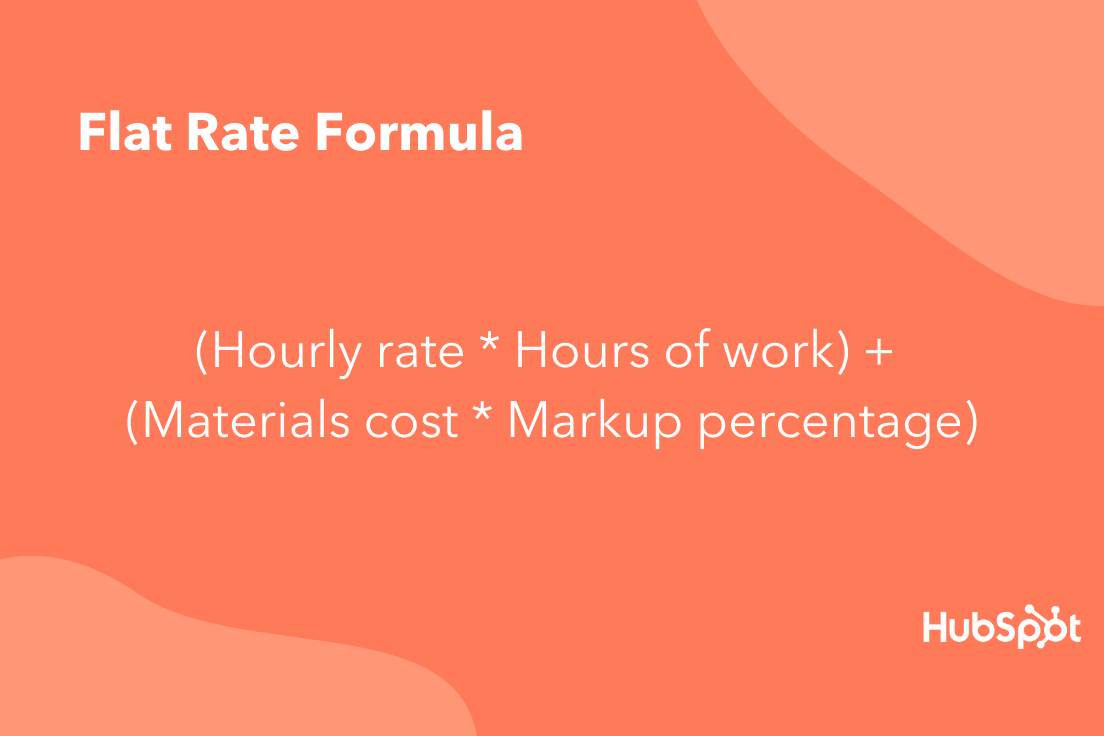I’m going to say something that probably won’t shock you — customers hate surprises. To be more specific, they hate bad surprises.
A common “bad surprise” for customers is receiving a higher-than-expected bill, or one with hidden fees. Both of these scenarios are avoidable with flat rate pricing — a strategy where you charge a single, up-front rate for a project regardless of the time, effort, and materials it takes to complete it.
The model has been around for decades, but a growing number of contractors are readopting it. Let’s take a closer look at the model, explore its pros and cons, and see it in action with some examples.
Flat rate pricing is appealing to both businesses and prospects because of its no-nonsense approach. Once a customer agrees on a price and signs the dotted line, the rest is easy — no need to meticulously track or record your time. And, you can accurately project your profits per job.
For example, let’s say you’re a freelance graphic designer and charge a flat rate of $400 for a logo design. Regardless of whether it takes you one hour or 20 to complete, or if a customer asks for multiple revisions, you will take home $400.
Based on the example above, you can probably guess that flat rate pricing is ideal for quick and repeatable services. This puts you in a great position to earn more money in less time. In other words, if you complete a project quickly, you can move on to another one and generate more profit.

If you price things correctly, a flat rate will cover the direct and indirect costs with a healthy profit leftover. But calculating an optimal one requires a solid strategy — and a little guesswork. So if you want to determine a fixed rate that will work for you, follow these steps:
Start by estimating the number of hours it will take to complete a project. If you’re unsure, use your work history as a guide —or research what your competitors charge for similar projects.
Multiply the number of hours you’ll work on the project by your hourly rate. The resulting number is your total labor cost.
If applicable, calculate the cost of materials for the project.
Multiply the cost of materials by your markup percentage. The resulting number is your total materials cost.
Lastly, add your total labor cost and total materials cost to find your total flat rate.
Challenges of Flat Rate Pricing
Flat rate pricing comes with its share of disadvantages. For one, you can run into trouble if customers demand above and beyond the original scope of work. Without managing customer expectations, you might overdeliver on a project without fair compensation.
To satisfy more demanding clients, you’ll want to include a provision that allows a certain number of changes or revisions during a project — establishing clear expectations and protecting your bottom line.
For flat rate pricing to work, you also need to accurately estimate your hours. If you’re a newbie, this number can be tough to calculate. Even seasoned pros can also struggle with this step, especially when a project experiences unexpected setbacks, delays, or challenges. If some aspects of the project take more time than expected, you won’t be paid for the extra hours.
Examples of Flat-Rate Pricing
1. The New York Times
Many digital subscriptions employ a flat-rate pricing model. For instance, the New York Times offers unlimited access to the digital version of its newspaper for $17 every four weeks. Whether you read only one or 100 articles a week, the price stays the same. Customers also get exactly what they pay for – no more and no less.
2. USPS
Postal services like USPS and FedEx offer flat-rate shipping. With this model, the weight or shape of an item does not determine the shipping cost. Instead, it’s based on how much you can stuff into a flat-rate box or envelope. For consumers, this up-front fee offers a great deal of predictability when estimating shipping costs.
3. Scentbird
Scentbird is a monthly perfume and cologne subscription box. For $15.95 a month, subscribers are sent a 30-day supply of fragrances to their mailbox. The subscription rate does not change in relation to the total value of the products in the box. In other words, there are no hidden fees or surprises for customers.
4. Service Work
Service workers typically bill by the hour. Meaning, clients don’t know how much a project costs until the bill arrives weeks later. Various tradespeople, including electricians, plumbers, and auto mechanics, turn to flat rate pricing to streamline the billing process and avoid conflict with unhappy clients.
5. Real Estate
A real estate company, agent, or broker may offer a flat rate for closing a sale. The flat rate remains the same, regardless of whether you end up selling higher or lower than the initial list price. This model differs from the typical percentage-based commission that most realtors charge.
Final Thoughts
A flat rate is one of the most straightforward pricing models. Customers know the cost upfront, and businesses can increase profits and save time from tracking work hours. But for this model to work, you need to gauge how long projects will take to complete. If your estimate is inaccurate, you may come up short.
![]()
Read more: blog.hubspot.com


